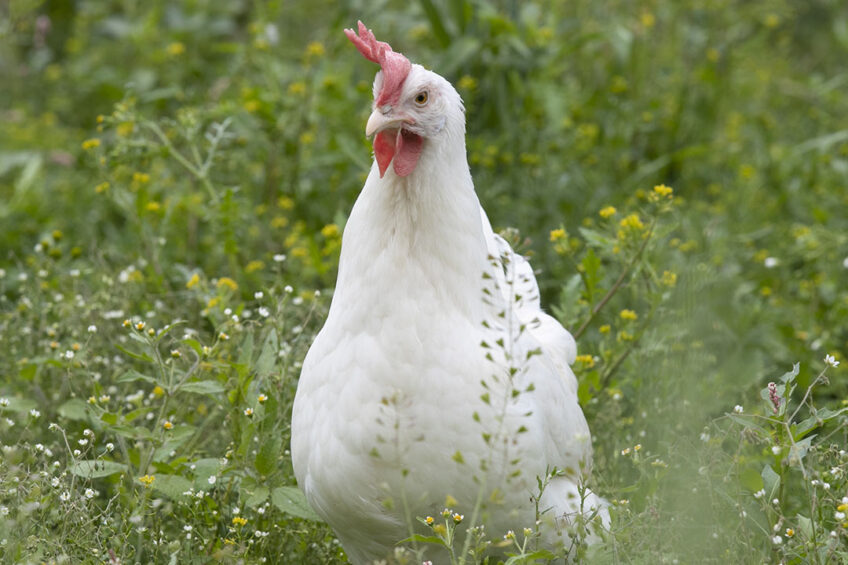Feeding poultry and enhancing global sustainability

Part of the reason poultry is so popular is that it is adaptable and versatile. Because of this, poultry can be part of the solution to feeding a growing global population. Industry experts predict poultry production could double over the next 30 years.
The global poultry sector is incredibly diverse. With hundreds of different varieties of birds being raised in every part of the world (according to some estimates, there are as many as 7,000 different breeds), nutritionists work in a variety of ways to create diets that are efficient, affordable and sustainable for the benefit of birds, farmers and consumers.
These amazing creatures can be raised, fed and housed in all types of climates and are often fed with feedstuffs that are locally sourced. Best of all, they are extremely efficient in converting simple, low-quality feed ingredients into valuable proteins such as eggs and meat. Hands down, poultry is one of the most effective sectors in animal agriculture.
Nutritional basics
Nutrition is the foundation. It lays the groundwork for birds to grow, maintain daily functions and produce food for human consumption.
Proper nutrients are vital for providing the bird with energy and aiding in the development of bone, flesh, feathers, and eggs. Nutrition also plays an important role in immunity. A solid diet helps a bird stay healthy and also battle disease and recover should it get sick.
For growing birds, minerals such as calcium are used in bone formation. In hens, calcium is necessary for the formation of eggshells. If adequate levels are not available, laying hens will make use of reserves from their skeletal system. Eventually, this could hinder or even halt production.
Other key nutrients include protein, carbohydrates, fats and various vitamins. Fortunately, there are many ways to meet these needs.
Feed ingredients
Many traditional commodities work well in poultry diets. Carbohydrate staples such as maize, barley, wheat, oats and other grains can satisfy nutritional needs as they are starch and sugar based. Protein requirements can be met by products such as soybean, canola, cotton and corn gluten meals.
Unlike their farm animal counterparts, such as cows and sheep, poultry do not digest plant cellulose very well. But on the flip side, as omnivores, they are able to utilise a wider variety of by-products in their diet. (Farmers raising ruminants cannot include certain animal-derived by-products in their diet due to the potential risk of transferring bovine spongiform encephalopathy, a.k.a. mad cow disease.)
Both protein and amino acids are present abundantly in poultry and fish meals, which have been used by the poultry sector for many years. Not only can these be safely fed to birds, but they are also low-cost and use by-products from aquaculture and poultry production, which represent a boost for sustainability and reducing carbon footprint. Calcium can be fed in a similar way via by-products such as bone meal and ground oyster shells.
Research at the University of Bari Aldo Moro in Italy in July 2022 examined the effectiveness of supplementing poultry feed with plant compounds called polyphenols, which can be extracted from other agricultural by-products such as grape pomaces and artichoke leaves and bracts.
Using these by-products is a win-win for everyone as they can reduce the cost of feeding the bird and make use of a product that would otherwise go to waste.
Poultry as by-products
Besides being especially efficient users of various feed ingredients, birds add another level to sustainability by closing the circle by becoming useful nutritional by-products themselves for other birds, fish and even household pets.
The nutrient content of poultry by-product meal can be quite variable, and it depends on the substrate that is being processed.
Poultry meal
According to Feedipedia, “Poultry by-product meal is one of the most important sources of animal protein used to feed domestic animals, along with meat and bone meal, blood meal, feather meal and fish meal.”
Processing facilities are able to turn offal and otherwise unusable carcasses (such as spent laying hens or injured birds) into a highly dense nutritional by-product that also generates additional income. Globally, this equates to millions of pounds of otherwise unwanted waste being reintroduced into the feeding cycle.
“The nutrient content of poultry by-product meal can be quite variable, and it depends on the substrate that is being processed,” says Feedipedia. “It is generally a palatable high-quality feed ingredient due to its content in essential amino acids, fatty acids, vitamins and minerals. In addition to its use in livestock, it is in high demand from the pet food and aquaculture industries.”
Poultry litter as fertiliser
Another byproduct which the global poultry sector produces is litter. Due to its high nitrogen content, poultry litter is much in demand among commercial farmers as a high-value and affordable fertiliser. It is an exceptionally great alternative to chemical-based fertilisers and those that would otherwise be produced with extensive energy or imported.
It is easy to see why poultry is one of the world’s favourite protein sources. Besides being delicious and nutritious, it has a high plane of feed efficiency and is backed by an industry dedicated to improving sustainability. The poultry industry will leave no stone unturned in its efforts to produce a safe, nutritious food that feeds the world.











